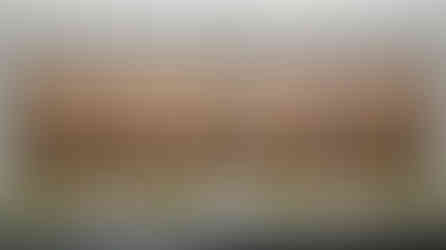Hiroshima Castle - Echoes of an Empire
- Shannon
- Jul 21
- 4 min read
Updated: Jul 29
Hiroshima Castle, originally constructed in 1589 by the warlord Mōri Terumoto, stood as a commanding symbol of power in the Chūgoku region during Japan’s volatile "Warring States" period. As one of Toyotomi Hideyoshi’s council of Five Elders and the head of one of the great feudal families, Terumoto built the castle not only as a stronghold but as a political hub from which he controlled western Japan. Designed as a flatland style fortress, it was unique in its strategic positioning, surrounded by a wide moat and flanked by thick stone walls, reflecting a tactical decision to prioritise accessibility and governance over defensibility from elevation. The architecture embodied both elegance and intimidation, a reminder of the iron will required to rule during an era defined by betrayal and siege warfare.

Throughout the Edo period, Hiroshima Castle remained a political and administrative centre under the control of successive Daimyo, most notably the Asano clan, who governed the Hiroshima Domain for over 250 years. While it was the seat of feudal authority, there is no historical record of public executions or torture chambers within its grounds. Unlike some castles with more violent pasts, Hiroshima Castle’s history during this era was marked more by governance and bureaucratic rule than by bloodshed. The castle precinct housed official residences, archives and administrative offices, its power enforced through law and order rather than fear.
As Japan modernised during the Meiji Restoration, Hiroshima Castle shifted from feudal stronghold to military command post. In the decades leading up to World War II, the Imperial Japanese Army repurposed the site as the headquarters for the Fifth Division and later as a centre for strategic planning under the Imperial General Headquarters. During the Second Sino-Japanese War and the early years of the Pacific War, orders for invasions, campaigns and occupation flowed directly from this castle. It was no longer just a symbol of war, it became a mechanism of it. As global tensions surged, so did the castle’s role in orchestrating Japan’s military operations throughout Asia.

The most harrowing chapter of Hiroshima Castle's history came on the 6th August 1945 at 8:15am. A single atomic bomb detonated roughly 600 metres above the ground, just a few hundred meters from the castle's centre The explosion unleashed a force equivalent to 15000 tons of TNT. Everything within a 2km radius was flattened in seconds. Hiroshima Castle, once a sentinel of centuries, was obliterated in a blinding flash, its stone walls shattered, timber incinerated and inhabitants vaporised. The military personnel stationed inside, many finalising endgame operations, perished instantly. Only fragments of foundation stones and ghostlike outlines in concrete remained to mark its existence.
After the bombing, Hiroshima became a desolate hellscape. The remains of the castle grounds were toxic with radiation and strewn with bodies. Survivors, or Hibakusha, reported seeing shadows burned into the stone walkways and silhouettes of soldiers etched permanently into charred walls. The site became a graveyard not just of people but of an entire historical legacy. For a time, nothing moved here, no rebuilding, no reclaiming. It was a ruin soaked in silence and ash, a reminder of how centuries of ambition could vanish in a moment.

In 1958, the main keep was reconstructed using modern materials, designed to replicate its original appearance. Today, Hiroshima Castle houses a museum across four floors, showcasing samurai armor, ancient artifacts and historical maps. But the structure, while impressive, is hollow compared to its past. It no longer commands armies or seals fates. Instead, it stands as a memorial to the dual nature of power, how it builds civilisations and how it dooms them. Visitors walk its halls not just to admire craftsmanship but to feel the weight of what was lost, through war, fire and silence.
Despite its modern serenity, Hiroshima Castle's moat still whispers to those who listen closely. Whether it's the footsteps of long-dead soldiers or the echo of an atomic wind, the castle is more than a museum. It is a haunted archive of ambition, cruelty, sacrifice and annihilation. Its stones have witnessed civil wars, imperial expansions, executions and the birth of the nuclear age. Few places in Japan hold such an enduring, layered legacy, at once regal and ruined, proud and pulverised.

Location : 21-1 Motomachi, Naka Ward, Hiroshima, Hiroshima Prefecture, Japan
How to get there : Hiroshima Castle is about a 10 minute walk from either the Kamiyacho-nishi or Kamiyacho-higashi tram stops, which you can reach in around 12 minutes from Hiroshima Station via tram lines 1, 2 or 6 (¥180). It’s also a 10 minute walk from Shukkeien Garden or about 15 minutes on foot from the Peace Memorial Park. Alternatively, you can take the Hiroshima Sightseeing Loop Bus, both the orange and lemon routes stop at the castle. The ride from Hiroshima Station takes around 6 minutes, with buses running approximately every 20 minutes.
Attraction Info : As of 2025, admission to Hiroshima Castle costs ¥370 for adults and ¥180 for high school students, while entry is free for younger children. The main keep is open daily between 9am - 6pm between March and November and from 9am - 5pm between December and February. Last admission is 30 minutes before closing time. Please note that the main keep is closed annually from December 29 to 31.
Official Website : www.rijo-castle.jp
Castle Map : https://hiroshimacastle.jp/castle/castle-map
広島城
Thanks for reading Hiroshima Castle - Echoes of an Empire. Check out more destinations here!























